Search for Indicators
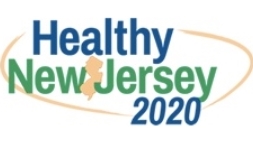
Healthy New Jersey 2020: Progress Tracker
Healthy New Jersey 2020 is the state's health improvement plan and its health promotion and disease prevention agenda for the decade.

Indicator Gauge Icon Legend
Legend Colors
Red is bad, green is good, blue is not statistically different/neutral.
Compared to Distribution
 the value is in the best half of communities.
the value is in the best half of communities.
 the value is in the 2nd worst quarter of communities.
the value is in the 2nd worst quarter of communities.
 the value is in the worst quarter of communities.
the value is in the worst quarter of communities.
Compared to Target
 meets target;
meets target;  does not meet target.
does not meet target.
Compared to a Single Value
 lower than the comparison value;
lower than the comparison value;
 higher than the comparison value;
higher than the comparison value;
 not statistically different from comparison value.
not statistically different from comparison value.
Trend

 non-significant change over time;
non-significant change over time; 
 significant change over time;
significant change over time;  no change over time.
no change over time.
Compared to Prior Value
 higher than the previous measurement period;
higher than the previous measurement period;
 lower than the previous measurement period;
lower than the previous measurement period;
 no statistically different change from previous measurement period.
no statistically different change from previous measurement period.
County: Morris
Health / Cancer
Value
Compared to:
County: Morris Age-Adjusted Death Rate due to Cancer
County: Morris Age-Adjusted Death Rate due to Cancer
128.9
Deaths per 100,000 population
(2016-2020)
Compared to:
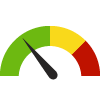
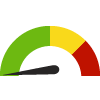







NJ Counties
The distribution is based on data from 21 New Jersey counties.

U.S. Counties
The distribution is based on data from 3,085 U.S. counties and county equivalents.

NJ Value
(141.0)
The regional value is compared to the New Jersey State value.

US Value
(149.4)
The regional value is compared to the national value.

Prior Value
(132.0)
Prior Value compares a measured value with the previously measured value. Confidence intervals were taken into account in determining the direction of the comparison.

Trend
This comparison measures the indicator’s values over multiple time periods.<br>The Mann-Kendall Test for Statistical Significance is used to evaluate the trend<br>over 4 to 10 periods of measure, subject to data availability and comparability.

HP 2030 Target
(122.7)

NJ 2020
(161.5)
County: Morris Age-Adjusted Death Rate due to Colorectal Cancer
County: Morris Age-Adjusted Death Rate due to Colorectal Cancer
11.3
Deaths per 100,000 population
(2016-2020)
Compared to:

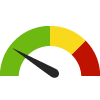







NJ Counties
The distribution is based on data from 21 New Jersey counties.

U.S. Counties
The distribution is based on data from 2,174 U.S. counties and county equivalents.

NJ Value
(13.0)
The regional value is compared to the New Jersey State value.

US Value
(13.1)
The regional value is compared to the national value.

Prior Value
(11.6)
Prior Value compares a measured value with the previously measured value. Confidence intervals were taken into account in determining the direction of the comparison.

Trend
This comparison measures the indicator’s values over multiple time periods.<br>The Mann-Kendall Test for Statistical Significance is used to evaluate the trend<br>over 4 to 10 periods of measure, subject to data availability and comparability.

HP 2030 Target
(8.9)

NJ 2020
(15.8)
<div><span>Colorectal cancer--cancer of the colon or rectum--is the second leading cause of cancer-related deaths in the United States. The Centers for Disease Control and Prevention estimates that if all adults aged 50 or older had regular screening tests for colon cancer, as many as 60% of the deaths from colorectal cancer could be prevented. While 90% of colorectal cancer cases occur in adults aged 50 or older, it is essential for individuals with risk factors (those with a family history of colorectal cancer, inflammatory bowel disease, or heavy alcohol use) to seek regular screening earlier.</span></div>
County: Morris Age-Adjusted Death Rate due to Lung Cancer
County: Morris Age-Adjusted Death Rate due to Lung Cancer
26.0
Deaths per 100,000 population
(2016-2020)
Compared to:









NJ Counties
The distribution is based on data from 21 New Jersey counties.

U.S. Counties
The distribution is based on data from 2,752 U.S. counties and county equivalents.

NJ Value
(30.2)
The regional value is compared to the New Jersey State value.

US Value
(35.0)
The regional value is compared to the national value.

Prior Value
(27.5)
Prior Value compares a measured value with the previously measured value. Confidence intervals were taken into account in determining the direction of the comparison.

Trend
This comparison measures the indicator’s values over multiple time periods.<br>The Mann-Kendall Test for Statistical Significance is used to evaluate the trend<br>over 4 to 10 periods of measure, subject to data availability and comparability.

HP 2030 Target
(25.1)

NJ 2020
(42.0)
<div><span>According to the American Lung Association, more people die from lung cancer annually than any other type of cancer, exceeding the total deaths caused by breast cancer, colorectal cancer, and prostate cancer combined. The greatest risk factor for lung cancer is duration and quantity of smoking. While the mortality rate due to lung cancer among men has reached a plateau, the mortality rate due to lung cancer among women continues to increase.</span></div>
County: Morris Age-Adjusted Death Rate due to Prostate Cancer
County: Morris Age-Adjusted Death Rate due to Prostate Cancer
14.3
Deaths per 100,000 males
(2016-2020)
Compared to:








U.S. Counties
The distribution is based on data from 1,576 U.S. counties and county equivalents.

NJ Value
(16.7)
The regional value is compared to the New Jersey State value.

US Value
(18.8)
The regional value is compared to the national value.

Prior Value
(14.5)
Prior Value compares a measured value with the previously measured value. Confidence intervals were taken into account in determining the direction of the comparison.

Trend
This comparison measures the indicator’s values over multiple time periods.<br>The Mann-Kendall Test for Statistical Significance is used to evaluate the trend<br>over 4 to 10 periods of measure, subject to data availability and comparability.

HP 2030 Target
(16.9)

NJ 2020
(21.2)
<div><span>According to the American Cancer Society, prostate cancer is the most commonly diagnosed form of cancer among men in the United States and it is second only to lung cancer as a cause of cancer-related death among men. The two greatest risk factors for prostate cancer are age and race/ethnicity, with men over the age of 65 and men of African descent possessing the highest incidence rates of prostate cancer in the U.S.</span></div>
County: Morris Cervical Cancer Incidence Rate
County: Morris Cervical Cancer Incidence Rate
6.7
Cases per 100,000 females
(2016-2020)
Compared to:








NJ Counties
The distribution is based on data from 20 New Jersey counties.

U.S. Counties
The distribution is based on data from 696 U.S. counties and county equivalents.

NJ Value
(7.4)
The regional value is compared to the New Jersey State value.

US Value
(7.5)
The regional value is compared to the national value.

Prior Value
(7.1)
Prior Value compares a measured value with the previously measured value. Confidence intervals were taken into account in determining the direction of the comparison.

Trend
This comparison measures the indicator’s values over multiple time periods.<br>The Mann-Kendall Test for Statistical Significance is used to evaluate the trend<br>over 4 to 10 periods of measure, subject to data availability and comparability.

NJ 2020
(7.2)
<div><span>Cervical cancer forms in tissues of the cervix. One out of every 145 women in the United States will be diagnosed in their lifetime. Early cervical cancer can be cured by removing or destroying the pre-cancerous or cancerous tissue. Human papillomavirus (HPV), which is transmitted through sexual contact, has been identified as the main cause of cervical cancer. In 2006, the FDA approved a new vaccine against HPV which prevents cervical cancer. In the United States in 2009, it is estimated that there were 11,270 new cases and 4,070 deaths from cervical cancer.</span></div>
County: Morris Colorectal Cancer Incidence Rate
County: Morris Colorectal Cancer Incidence Rate
36.5
Cases per 100,000 population
(2016-2020)
Compared to:
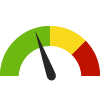







NJ Counties
The distribution is based on data from 21 New Jersey counties.

U.S. Counties
The distribution is based on data from 2,401 U.S. counties and county equivalents.

NJ Value
(38.7)
The regional value is compared to the New Jersey State value.

US Value
(36.5)
The regional value is compared to the national value.

Prior Value
(37.6)
Prior Value compares a measured value with the previously measured value. Confidence intervals were taken into account in determining the direction of the comparison.

Trend
This comparison measures the indicator’s values over multiple time periods.<br>The Mann-Kendall Test for Statistical Significance is used to evaluate the trend<br>over 4 to 10 periods of measure, subject to data availability and comparability.

NJ 2020
(39.7)
<div><span>Colorectal cancer--cancer of the colon or rectum--is the second leading cause of cancer-related deaths in the United States. If adults aged 50 or older had regular screening tests, as many as 60% of the deaths from colorectal cancer could be prevented. In the U.S. in 2009, it is estimated that there were 106,100 new cases and 49,920 deaths from colorectal cancer.</span></div>
County: Morris
Health / Diabetes
Value
Compared to:
County: Morris Age-Adjusted Death Rate due to Diabetes
County: Morris Age-Adjusted Death Rate due to Diabetes
16.2
Deaths per 100,000 population
(2019-2021)
Compared to:






NJ Counties
The distribution is based on data from 21 New Jersey counties.

NJ Value
(18.5)
The regional value is compared to the New Jersey State value.

US Value
(24.8 in 2020)
The regional value is compared to the national value. The source for the national value is Centers for Disease Control and Prevention

Prior Value
(14.7)
Prior Value compares a measured value with the previously measured value. Confidence intervals were taken into account in determining the direction of the comparison.

NJ 2020
(15.8)
<div><span>Diabetes is a group of diseases marked by high levels of blood glucose, also called blood sugar, resulting from defects in insulin production, insulin action, or both. In 2007, diabetes was the seventh leading cause of death in the United States and an estimated 23.6 million people or 7.8% of the population had diabetes. The prevalence of diagnosed type 2 diabetes increased sixfold in the latter half of the last century. Diabetes risk factors such as obesity and physical inactivity have played a major role in this dramatic increase. Age, race, and ethnicity are also important risk factors. </span><br /><br /><span>Diabetes can have a harmful effect on most of the organ systems in the human body; it is a frequent cause of end-stage renal disease, non-traumatic lower-extremity amputation, and a leading cause of blindness among working age adults. Persons with diabetes are also at increased risk for ischemic heart disease, neuropathy, and stroke. In economic terms, the direct medical expenditure attributable to diabetes in 2007 was estimated to be $116 billion.</span></div>
County: Morris
Health / Heart Disease & Stroke
Value
Compared to:
28.4
Deaths per 100,000 population
(2019-2021)
Compared to:







NJ Counties
The distribution is based on data from 21 New Jersey counties.

NJ Value
(31.6)
The regional value is compared to the New Jersey State value.

US Value
(38.8 in 2020)
The regional value is compared to the national value. The source for the national value is Centers for Disease Control and Prevention

Prior Value
(28.1)
Prior Value compares a measured value with the previously measured value. Confidence intervals were taken into account in determining the direction of the comparison.

HP 2030 Target
(33.4)

NJ 2020
(28.6)
<div><span>Cerebrovascular diseases rank third among the leading causes of death in the U.S. Cerebrovascular disease can cause a stroke. A stroke occurs when blood vessels carrying oxygen to the brain become blocked or burst, thereby cutting off the brain's supply of oxygen. Lack of oxygen causes brain cells to die which can lead to death or disability. Each year, approximately 795,000 people in the U.S. will suffer a new or recurrent stroke. Although people of all ages may have strokes, the risk more than doubles with each decade of life after age 55. The most important modifiable risk factors for stroke are high blood pressure, high cholesterol and diabetes mellitus.</span></div>
County: Morris Age-Adjusted Death Rate due to Heart Disease
County: Morris Age-Adjusted Death Rate due to Heart Disease
135.3
Deaths per 100,000 population
(2019-2021)
Compared to:





NJ Counties
The distribution is based on data from 21 New Jersey counties.

NJ Value
(161.4)
The regional value is compared to the New Jersey State value.

Prior Value
(141.9)
Prior Value compares a measured value with the previously measured value. Confidence intervals were taken into account in determining the direction of the comparison.

NJ 2020
(112.1)
<div>
<div>Heart disease is a term that encompasses a variety of different diseases affecting the heart and is the leading cause of death in the United States accounting for 25.4% of total deaths. The most common type in the United States is coronary artery disease, which can cause heart attack, angina, heart failure, and arrhythmias. Coronary artery disease occurs when plaque builds up in the arteries that supply blood to the heart and the arteries narrow (atherosclerosis). There are many modifiable risk factors for atherosclerosis including tobacco smoking, obesity, sedentary lifestyle, and high levels of low-density lipoprotein in blood serum. Moreover, it is important to note that heart disease is the number one killer of women in the United States.</div>
<div> </div>
</div>
County: Morris
Health / Immunizations & Infectious Diseases
Value
Compared to:
County: Morris Tuberculosis Incidence Rate
County: Morris Tuberculosis Incidence Rate
3.1
Cases per 100,000 population
(2022)
Compared to:








NJ Counties
(2021)
The distribution is based on data from 21 New Jersey counties.

NJ Value
(3.1)
The regional value is compared to the New Jersey State value.

US Value
(2.4 in 2021)
The regional value is compared to the national value. The source for the national value is Centers for Disease Control and Prevention

Prior Value
(3.6)
Prior Value compares a measured value with the previously measured value. Confidence intervals were not taken into account in determining the direction of the comparison.

Trend
This comparison measures the indicator’s values over multiple time periods.<br>The Mann-Kendall Test for Statistical Significance is used to evaluate the trend<br>over 4 to 10 periods of measure, subject to data availability and comparability.

HP 2030 Target
(1.4)

NJ 2020
(3.5)
<div><span>Tuberculosis (TB) is a bacterial disease that usually affects the lungs, although other parts of the body can also be affected. The TB bacteria are spread through the air when a person with untreated pulmonary TB coughs or sneezes. Prolonged exposure to a person with untreated TB is usually necessary for infection to occur. In 9 out of 10 exposed people, the immune system halts the spread of the infection and the infected person does not become sick or spread disease to others. However, the bacilli remain dormant and can be activated if the immune system becomes severely weakened by HIV, diabetes, chemotherapy cancer treatments, or other causes. A person with TB disease is contagious until he/she has been on appropriate treatment for several days to weeks. The most important way to stop the spread of tuberculosis is for TB patients to cover the mouth and nose when coughing, and to take all TB medicine exactly as prescribed by their physician.</span></div>
County: Morris
Health / Maternal, Fetal & Infant Health
Value
Compared to:
County: Morris Babies with Low Birthweight
County: Morris Babies with Low Birthweight
6.7%
(2021)
Compared to:







NJ Counties
The distribution is based on data from 21 New Jersey counties.

NJ Value
(7.7%)
The regional value is compared to the New Jersey State value.

US Value
(8.5%)
The regional value is compared to the national value. The source for the national value is Centers for Disease Control and Prevention

Prior Value
(6.5%)
Prior Value compares a measured value with the previously measured value. Confidence intervals were taken into account in determining the direction of the comparison.

Trend
This comparison measures the indicator’s values over multiple time periods.<br>The Mann-Kendall Test for Statistical Significance is used to evaluate the trend<br>over 4 to 10 periods of measure, subject to data availability and comparability.

NJ 2020
(7.7%)
<div><span>Babies born with a low birth weight are more likely than babies of normal weight to require specialized medical care, and often must stay in the intensive care unit. Low birth weight is often associated with premature birth. While there have been many medical advances enabling premature infants to survive, there is still risk of infant death or long-term disability. The most important things an expectant mother can do to prevent prematurity and low birth weight are to take prenatal vitamins, stop smoking, stop drinking alcohol and using drugs, and most importantly, get prenatal care.</span></div>
County: Morris Babies with Very Low Birthweight
County: Morris Babies with Very Low Birthweight
0.8%
(2021)
Compared to:







NJ Counties
The distribution is based on data from 21 New Jersey counties.

NJ Value
(1.2%)
The regional value is compared to the New Jersey State value.

US Value
(1.4%)
The regional value is compared to the national value. The source for the national value is Centers for Disease Control and Prevention

Prior Value
(0.9%)
Prior Value compares a measured value with the previously measured value. Confidence intervals were taken into account in determining the direction of the comparison.

Trend
This comparison measures the indicator’s values over multiple time periods.<br>The Mann-Kendall Test for Statistical Significance is used to evaluate the trend<br>over 4 to 10 periods of measure, subject to data availability and comparability.

NJ 2020
(1.4%)
<div><span>Babies born with a very low birth weight are more likely than babies of normal weight to require specialized medical care and often must stay in intensive care nurseries. Low birth weight is often associated with premature birth. Babies born at very low birth weight are at the highest risk of dying in their first year. While there have been many medical advances enabling very low birth weight and premature infants to survive, there is still risk of infant death or long-term disability. To prevent prematurity and low birth weight, expectant mothers should take prenatal vitamins, stop smoking, stop drinking alcohol and using drugs, and most importantly, get prenatal care.</span></div>
County: Morris Infant Mortality Rate
County: Morris Infant Mortality Rate
2.6
Deaths per 1,000 live births
(2019-2021)
Compared to:







NJ Value
(4.0)
The regional value is compared to the New Jersey State value.

US Value
(5.4 in 2021)
The regional value is compared to the national value. The source for the national value is Centers for Disease Control and Prevention

Prior Value
(2.9)
Prior Value compares a measured value with the previously measured value. Confidence intervals were taken into account in determining the direction of the comparison.

Trend
This comparison measures the indicator’s values over multiple time periods.<br>The Mann-Kendall Test for Statistical Significance is used to evaluate the trend<br>over 4 to 10 periods of measure, subject to data availability and comparability.

HP 2030 Target
(5.0)
<div>MICH-02: Reduce the rate of infant deaths <strong>(LEADING HEALTH INDICATOR)</strong></div>

NJ 2020
(4.8)
<div><span>Infant mortality rate continues to be one of the most widely used indicators of the overall health status of a community. The leading causes of death among infants are birth defects, pre-term delivery, low birth weight, Sudden Infant Death Syndrome (SIDS), and maternal complications during pregnancy.</span></div>
County: Morris Mothers who Received Early Prenatal Care
County: Morris Mothers who Received Early Prenatal Care
82.6%
(2021)
Compared to:







NJ Counties
The distribution is based on data from 21 New Jersey counties.

NJ Value
(74.9%)
The regional value is compared to the New Jersey State value.

US Value
(78.3%)
The regional value is compared to the national value. The source for the national value is Centers for Disease Control and Prevention

Prior Value
(84.5%)
Prior Value compares a measured value with the previously measured value. Confidence intervals were taken into account in determining the direction of the comparison.

Trend
This comparison measures the indicator’s values over multiple time periods.<br>The Mann-Kendall Test for Statistical Significance is used to evaluate the trend<br>over 4 to 10 periods of measure, subject to data availability and comparability.

NJ 2020
(79.4%)
<div><span><span>Babies born to mothers who do not receive prenatal care are three times more likely to have a low birth weight and five times more likely to die than those born to mothers who do get care. Early prenatal care (i.e. care in the first trimester of a pregnancy) allows women and their health care providers to identify and, when possible, treat or correct health problems and health-compromising behaviors that can be particularly damaging during the initial stages of fetal development. Increasing the number of women who receive prenatal care, and who do so early in their pregnancies, can improve birth outcomes and lower health care costs by reducing the likelihood of complications during pregnancy and childbirth.</span></span></div>
County: Morris
Health / Mental Health & Mental Disorders
Value
Compared to:
County: Morris Age-Adjusted Death Rate due to Suicide
County: Morris Age-Adjusted Death Rate due to Suicide
7.7
Deaths per 100,000 population
(2019-2021)
Compared to:
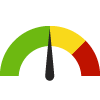






NJ Counties
The distribution is based on data from 21 New Jersey counties.

NJ Value
(7.3)
The regional value is compared to the New Jersey State value.

US Value
(13.5 in 2020)
The regional value is compared to the national value. The source for the national value is Centers for Disease Control and Prevention

Prior Value
(6.9)
Prior Value compares a measured value with the previously measured value. Confidence intervals were taken into account in determining the direction of the comparison.

HP 2030 Target
(12.8)
<div>MHMD-01: Reduce the suicide rate <strong>(LEADING HEALTH INDICATOR)</strong></div>

NJ 2020
(5.9)
<div><span>Suicide is a major, preventable public health problem. In 2007, suicide was the 11th leading cause of death in the United States. Based on 2007 age-adjusted death rates, men were nearly four times more likely to die of suicide than females, and white individuals were over two times more likely to die of suicide than black or Hispanic individuals. Older Americans are disproportionately likely to die by suicide. An estimated eight to 25 attempted suicides occur for every suicide death.</span></div>
County: Morris
Health / Prevention & Safety
Value
Compared to:
County: Morris Age-Adjusted Death Rate due to Unintentional Poisonings
County: Morris Age-Adjusted Death Rate due to Unintentional Poisonings
20.2
Deaths per 100,000 population
(2019-2021)
Compared to:






NJ Counties
The distribution is based on data from 21 New Jersey counties.

NJ Value
(31.5)
The regional value is compared to the New Jersey State value.

US Value
(28.3 in 2020)
The regional value is compared to the national value. The source for the national value is Centers for Disease Control and Prevention

Prior Value
(21.0)
Prior Value compares a measured value with the previously measured value. Confidence intervals were taken into account in determining the direction of the comparison.

NJ 2020
(6.8)
County: Morris
Health / Weight Status
Value
Compared to:
County: Morris Adults 20+ Who Are Obese
County: Morris Adults 20+ Who Are Obese
21.4%
(2021)
Compared to:







NJ Counties
The distribution is based on data from 21 New Jersey counties.

U.S. Counties
The distribution is based on data from 3,074 U.S. counties and county equivalents.

Prior Value
(18.8%)
Prior Value compares a measured value with the previously measured value. Confidence intervals were taken into account in determining the direction of the comparison.

Trend
This comparison measures the indicator’s values over multiple time periods.<br>The Mann-Kendall Test for Statistical Significance is used to evaluate the trend<br>over 4 to 10 periods of measure, subject to data availability and comparability.

HP 2030 Target
(36.0%)

NJ 2020
(23.8%)
<div><span>The percentage of obese adults is an indicator of the overall health and lifestyle of a community. Obesity increases the risk of many diseases and health conditions including heart disease, Type 2 diabetes, cancer, hypertension, stroke, liver and gallbladder disease, respiratory problems, and osteoarthritis. Losing weight and maintaining a healthy weight help to prevent and control these diseases. Being obese also carries significant economic costs due to increased healthcare spending and lost earnings.</span></div>

